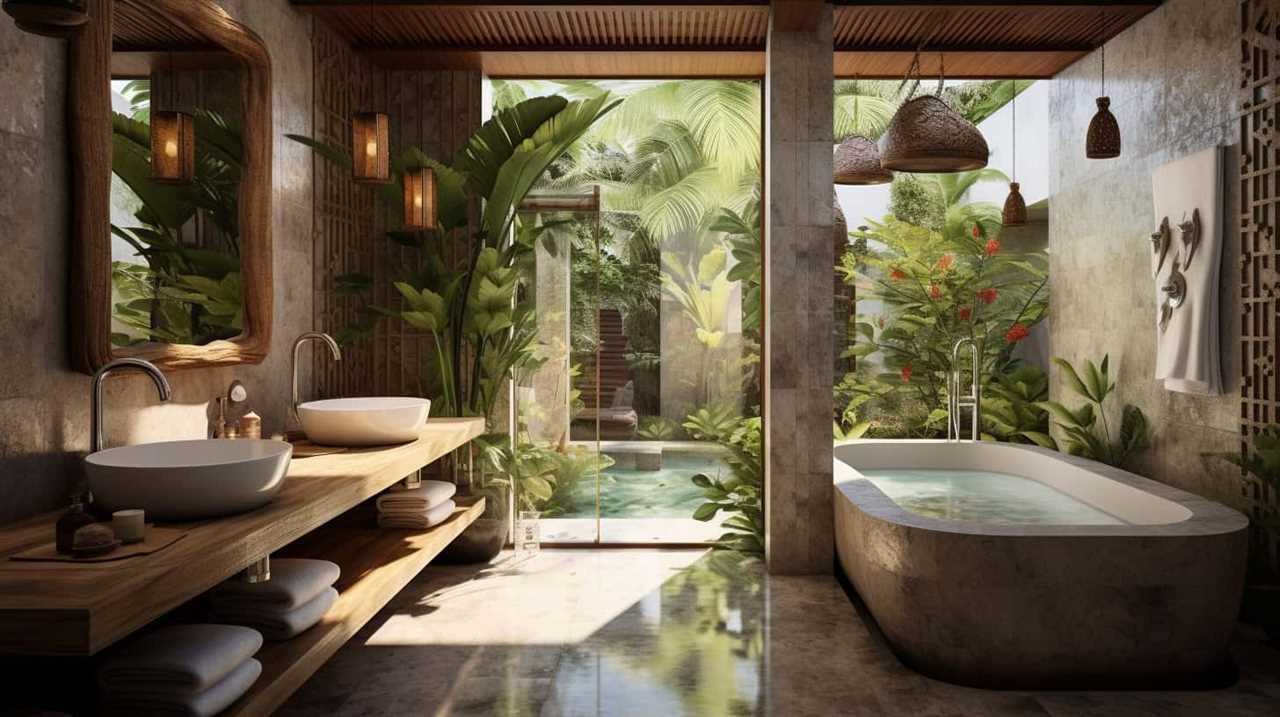Are you prepared to turn your home into a green oasis? Look into houseplants!
These green wonders not only add a touch of natural beauty to any space, but they also bring numerous benefits to our lives.
From purifying the air we breathe to boosting our mood and productivity, house plants are the ultimate companions for a healthy and harmonious living environment.
Join us as we delve into the world of house plants, uncovering essential care tips and discovering the best options for beginners.

Let’s cultivate our green thumbs together!
Key Takeaways
- House plants improve air quality through phytoremediation.
- House plants enhance the aesthetic appeal of our homes.
- House plants contribute to the improvement of our mental health through air purification.
- Proper care including watering, light, humidity, fertilization, and pest control is essential for the well-being of house plants.
Benefits of House Plants
One of the key benefits of having house plants is that they improve the air quality in our homes. House plants have the remarkable ability to purify the air by removing harmful toxins and pollutants. Through a process known as phytoremediation, plants absorb and break down these airborne contaminants, releasing cleaner and fresher oxygen back into the environment.
This natural air purification system can have a significant impact on our mental health, as poor air quality has been linked to various psychological issues such as stress, anxiety, and decreased cognitive function. By introducing house plants into our living spaces, we can create a healthier and more conducive environment for our overall well-being.
The presence of these green companions not only enhances the aesthetic appeal of our homes but also contributes to the improvement of our mental health through air purification.

Essential Care Tips
To ensure the health and longevity of our house plants, it’s important that we follow these essential care tips.
- Indoor plant watering: It’s crucial to water our indoor plants properly. Overwatering can lead to root rot, while underwatering can cause wilting and stunted growth. We should water our plants when the top inch of soil feels dry, ensuring that excess water drains out of the pot.
- Natural light for plants: House plants need adequate light to thrive. Place them near windows that receive bright, indirect sunlight. Avoid placing them in direct sunlight, as it can scorch their leaves. If natural light is limited, consider using artificial grow lights to supplement their light needs.
- Monitor humidity: Many indoor plants thrive in humid environments. To increase humidity, place a tray filled with water near the plants or use a humidifier. Mist the leaves occasionally to provide additional moisture.
- Fertilize regularly: Indoor plants require regular fertilization to replenish nutrients in their soil. Use a balanced, water-soluble fertilizer and follow the instructions for application.
- Inspect for pests: Regularly inspect your house plants for pests such as aphids, mealybugs, and spider mites. If detected, treat them promptly using appropriate organic or chemical methods.
Best House Plants for Beginners
When selecting house plants for beginners, we should consider options that are easy to care for and resilient in various indoor environments. To assist you in making an informed decision, we have compiled a table showcasing some of the best house plants for beginners:
| Plant Name | Light Requirements | Watering Needs | Ideal Pot Size |
|---|---|---|---|
| Snake Plant | Low to bright indirect light | Minimal | 6-8 inches |
| Pothos | Low to bright indirect light | Moderate | 6-8 inches |
| ZZ Plant | Low to bright indirect light | Minimal | 6-8 inches |
| Spider Plant | Bright indirect light | Moderate | 4-6 inches |
These plants are known for their adaptability to different light conditions and their ability to survive with minimal watering. When choosing the right pot for your house plants, opt for a container with drainage holes to prevent overwatering. Additionally, consider the size of the plant and its growth potential when selecting the ideal pot size. By keeping these factors in mind, beginners can ensure successful growth and maintenance of their house plants.
Styling Your House Plants
Now let’s explore ways to enhance the aesthetic appeal of our house plants through styling techniques. By incorporating these decorating tips and following our repotting guide, you can transform your house plants into stunning focal points in your home:

- Choose the right containers: Select pots that complement your plant’s size and style, such as modern or vintage designs.
- Experiment with groupings: Arrange multiple plants together to create visually appealing displays and add depth to your space.
- Utilize different heights: Play with varying plant heights to create a visually dynamic arrangement.
- Add decorative elements: Incorporate decorative stones or moss to add texture and interest to your plant displays.
- Consider placement: Place your plants strategically in well-lit areas or near windows to maximize their visual impact.
Now that we’ve learned how to style our house plants, let’s move on to troubleshooting common house plant problems.
Troubleshooting Common House Plant Problems
Let’s tackle common house plant problems together. When it comes to preventing pest infestations, there are a few key steps you can take.
First, make sure to regularly inspect your plants for any signs of pests, such as webs, spots, or chewed leaves. If you do spot any pests, isolate the affected plant and treat it with an appropriate pest control method, such as insecticidal soap or neem oil.
Additionally, maintaining a clean and tidy environment around your plants can help deter pests from taking hold.

Managing over watering is another common issue faced by house plant enthusiasts. To prevent over watering, always check the moisture level of your soil before watering. Stick your finger about an inch into the soil and if it feels dry, it’s time to water.
Another helpful tip is to choose the right pot for your plant, one that has drainage holes to allow excess water to escape. If you do happen to over water, it’s important to act quickly. Remove the plant from its pot and gently shake off any excess water. Allow the roots to dry out before re-potting in fresh, well-draining soil.
Frequently Asked Questions
How Do I Know if My House Plant Is Getting Enough Sunlight?
To determine if a house plant is getting enough sunlight, observe any signs of sunburn or elongated growth. Adjust the amount of sunlight by placing the plant in a brighter spot or providing shade.
Can I Use Tap Water to Water My House Plants, or Is It Better to Use Filtered Water?
Using tap water vs filtered water for house plants, is there a significant difference in growth? Is rainwater a better alternative to tap water for watering house plants? We’ll explore the scientific, technical details to help you master this topic.

What Are Some Signs That My House Plant Needs to Be Repotted?
Signs of root bound plants include stunted growth, roots growing out of drainage holes, and the plant becoming top-heavy. Repotting techniques involve gently removing the plant from its current container and transferring it to a larger one with fresh soil.
Are There Any House Plants That Are Safe for Pets?
Yes, there are house plants that are safe for pets. Some safe plants include spider plants, Boston ferns, and African violets. However, it’s important to note that there are also toxic plants to avoid.
How Often Should I Fertilize My House Plants, and What Type of Fertilizer Should I Use?
We should fertilize our house plants regularly to provide essential nutrients for their growth. The frequency depends on the type of plant and its specific needs. Organic and synthetic fertilizers both have their advantages and disadvantages.
Conclusion
In conclusion, house plants offer numerous benefits such as improving air quality, reducing stress, and enhancing overall well-being.

To ensure their optimal growth, it’s essential to provide proper care by watering, fertilizing, and providing adequate sunlight.
For beginners, low-maintenance plants like pothos or snake plants are recommended.
Additionally, styling house plants can bring a touch of nature and beauty to any space.
Lastly, troubleshooting common problems such as overwatering or pests will help maintain the health and vitality of these botanical companions.











